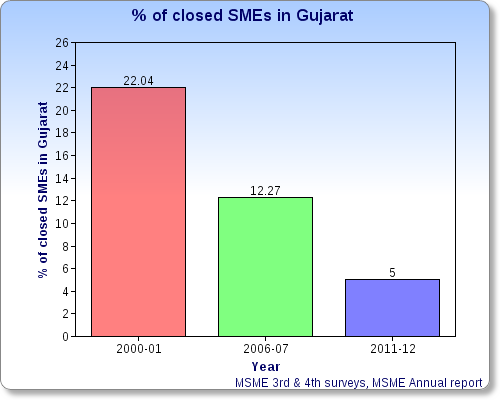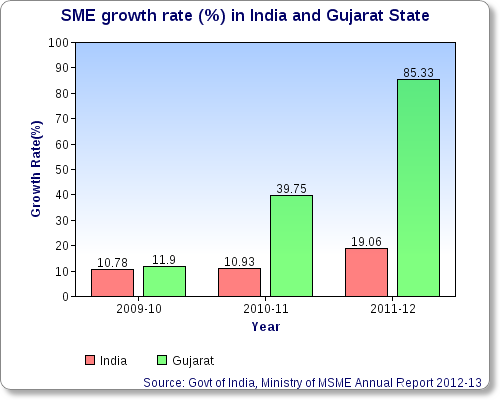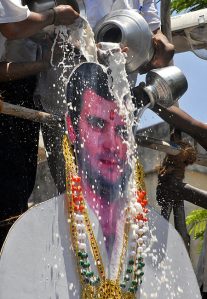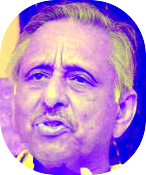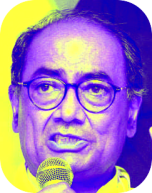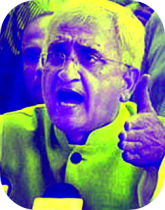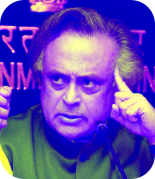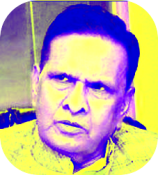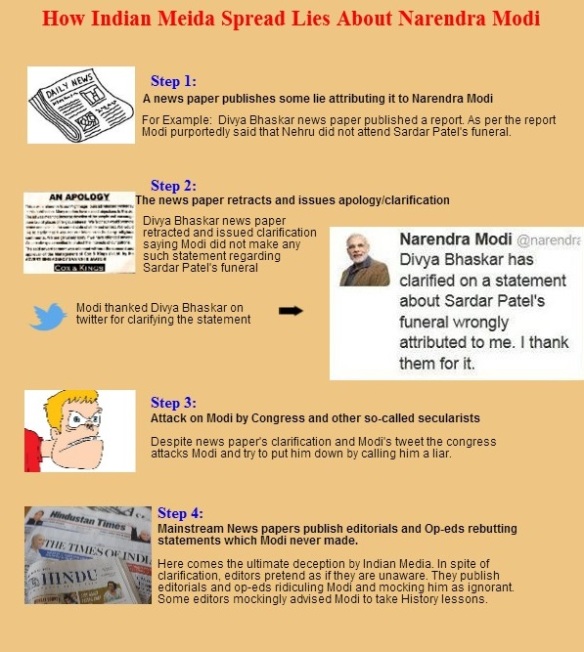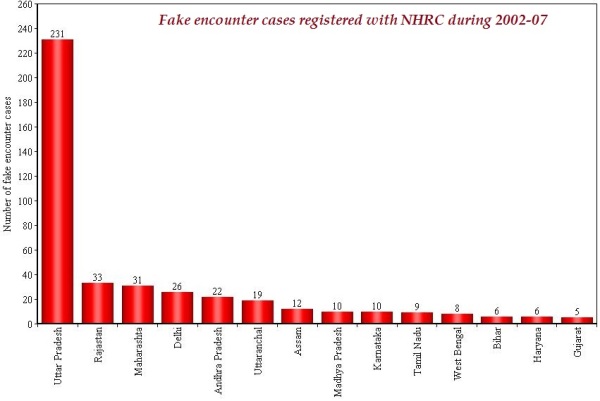Yesterday, when I was casually going through my Facebook I found a post from Justice(retd) Markandey Katju about Modi and Gujarat’s development. I understood that this time it’s Modi’s turn to receive brickbats from Katju. I then clicked on the link to read his blog post. And yes, as expected by me, it was a quick attempt by Mr Katju to downplay the Gujarat’s growth story. Most of the people who read news papers regularly do not need any introduction about Mr Katju, as he is popular for his infamous 90%-Indians-are-idiots comment.
Justice(retd) Katju is currently working as Chairman, Press Council of India. He is appointed by Sonia Gandhi led UPA Government after his retirement as Judge of Supreme court of India. Apart from that, Mr Katju is also grandson of Mr Kailashnath Katju, former Congress Chief Minister of Madhya Pradesh. Mr Kailashnath was also a Minister in Nehru’s Cabinet. It is not a surprise that Justice Katju too hold Nehruvian socialist-secular views. In short, he belongs to the same brigade, which believes that the Mughals were ‘seculars’ but BJP/RSS men are ‘communal’.
Mr Katju can give sanctimonious lectures on any topic under the sun — Mathematics, Sciences, History, Economics, Politics, and even Medicine. He strongly believes that 90% of Indians are fools. Reason? They believe in astrology, religion etc. I don’t have problem with Katju holding Nehruvian ideology, after all, our liberal Hindu ethos allow both atheists and theists to co-exist peacefully. But I feel that there is a need to rebut Mr Katju’s article on Gujarat’s development, as he ignored/misrepresented various facts.
“I have been asked my opinion about Mr.Modi.Till now I avoided commenting on him since I thought that my views may bemisconstrued as if I wish to influence the Gujarat elections. Now that the elections are over I may speak out.”
In a society like ours, everyone has right to hold a view about anything. In case of private citizens, this is an irrefutable fact. But for those who are holding offices in bureaucray, judiciary etc, while expressing their opinions, there is a need to maintain some restraint. People – Right wing or Left wing – repose their faith in them. People expect them to be not only impartial but also appear to be impartial. Taking stand on political issues or political leaders is not wrong but announcing them publicly will do no good. If Mr.Katju really wants to comment on political issues then he should get ready to be branded as “Congress Chamcha”. Whether it is true or not is a different issue, but people in general identify his ideas with Nehruvian school of thought. So it is quite natural to identify him with Congress party in general, and Nehru dynasty in particular. His silence about Sonia Gandhi, Rahul Gandhi, Indira Gandhi, Scams under the nose of Manmohan Singh etc gives credence to the argument.
“The test of every system is whether the standard of living of the masses is rising or not. Modi was no doubt successful inprojecting an image of ‘Gujarat Shining’ under him. But the stark reality is very different.”
Of course, everyone agrees that the standard of living of masses is an important criterion to test the system. But what Mr.Katju missed is the fact that Mr Modi never claimed that Gujarat is fully developed. Modi always says that he is still removing pebbles and weeds of previous congress governments but his dream of building “Divya Bhavya Gujarat” is yet to be done. Modi projected what his Government has done to Gujarat. Every Government projects its rule as “golden period”. No Government projects its rule as “gloomy period”. Ultimately, people are the witness. If “stark reality” is very different, as Mr Katju says, people will never vote the government back to power. No politician can escape the anti-incumbency factor. The greatest feat of Modi is to retain Gujarat by facing election in the year of drought. Seriously, any seasoned politician can tell you how difficult it is to fight election for the incumbents in the year of drought. Drought in the election year is a curse for the incumbents and a boon for their rival parties.
“Apart from what was done to Muslims in 2002, let us consider a few facts.”
Mr Katju is completely unaware of the facts of Gujarat riots. His understanding is limited to the newspaper reports and editorials written by Anti-Modi brigade, which are starkly different from the reports of investigative agencies, judicial commissions and courts. I wonder whether Mr Katju ever spoke about what Congress did to Sikhs in 1984. As Mr Katju restrained himself from speaking about 2002 riots, i too feel it is not necessary to comment about it.
“(1) Child malnutrition at 48 % in Gujarat is higher than the national average, far higher than the poorest African Sub Saharan countries of Somalia and Ethiopia where the rate is about 33%. When Modi was confronted with this he said thatgirls in Gujarat do not eat or drink milk for fear of becoming fat, the people are vegetarians, etc which is all nonsense. Should the Gujarati children eat the factories, roads and electricity Modi has created ?”
Here Katju conveniently ignored to mention several important things. What is India’s malnutrition figure? Who has done this survey? And more importantly, when was the survey done? Katju never mentions those things, as mentioning them will only debunk his claims. Now let me reveal some interesting things about this so called “malnutrition”.
This figure is from NFHS-III. It was done in the year 2005. i.e. almost 7 years ago. The next round of survey is due in 2013-14. I don’t know how far the survey that was done in 2005 could be used as an index for measuring Modi Government’s performance in Gujarat in the year 2012. Also Mr Katju didn’t even bother to check out the initiatives taken by Modi government during 2005-13 in health sector and the achievements and improvements brought in by Modi’s Govt. One more important thing Katju misses (or hides?) here is the malnutrition figure of India. The malnutrition figure of India is 47%. (only 1% less than Gujarat). I wonder whether Katju questions Manmohan Singh and Congress Government for this dismal figue. After all, it is Central Govt which formulates plans and allocates funds for health schemes like ICDS. Modi started working on it from 2005. He alerted the central government to come up with a comprehensive plan.
Gujarat’s focus on social sector began in 11th plan period (2007-12). In 2007, Gujarat Govt introduced “Bal-Bhog” scheme, to address the micro-nutrient malnutrition Dudh Sanjeevani Yojana– The scheme provides 100 ml pasteurized, flavored, fortified milk twice a week to the children in the age group of 3 to 6 years in 10 backward blocks of 6 districts. There is another scheme for providing fruits to the children of anganwadi. Apart from these, there are selected area activity schemes and nutrition programmes like Vanbandhu Kalyan Yojna, Saheri Garib Samruddhi Yojana, Sagarkhedu Sarvangi Vikas Yojana etc. There are predetermined targets at the time of releasing funds. So performance of Modi should be assessed based on what he has done and what his achievements are with respect to targets.
Ok. Leaving aside what Modi Govt has done to tackle the Malnutrition issue, who is basically responsible for malnutrition in India? I say people like katju are responsible for malnutrition in India. Katju contemptuously questioned “Should children eat factories, roads, and electricity Modi has created?”. “Omniscient” Katju is under belief that malnutrition in India is because of food insecurity. Not only Katju, but also almost all those socialist types who ruled India since independence were under the same delusion that lack of money to buy food (or non-availability of food) is the primary reason for malnutrition. This whole idea of ‘food insecurity’ as a reason for malnutrition came up because of Sub-Sahara African experience. India has been implementing ICDS since 1975. Katju type of people who were in bureaucracy during socialist days have thought that food insecurity and poverty were the main reasons for malnutrition. Hence they concentrated only on food distribution schemes to below poverty line people. Therefore the response to malnutrition in India has been skewed towards food-based interventions and has placed little emphasis on schemes addressing the other determinants of malnutrition. e.g. improving child-care behaviors and educating parents how to improve nutrition using the family food budget.
“Omniscient” Katju rubbished altogether Modi’s point that vegetarianism might be the reason. But the fact is that there are some scientific studies which confirm that vegetarianism may lead to subclinical malnutrition. However some people try to argue that protein rich food can be made available to vegetarians in form of soyabeans etc. But the question is how many vegetarians include such items in their diet? Even comparison between two vegetarian states is not proper because a Gujarati’s everyday vegetarian meal is different from a Punjabi’s everyday Vegetarian meal. “Nutrition” Journal carried an article in its February 2012 issue (Vol 28, Issue 2, Pages 148 -155). It was a research paper which concluded that Vegetarianism can cause subclinical malnutrition.
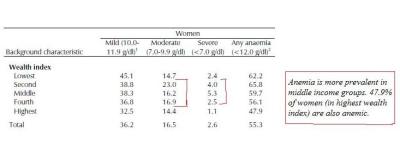
In a socialist country like India, we crave for political correctness. The Nehruvian socialistic society worships poverty. We try to attribute every problem of life to economic inequality. We cheat ourselves saying repeatedly that problems are only for those who are poor and there shall be no problems for those who are rich. The same is the case with malnutrition. The socialists are first in queue to blame economic inequality or distributional inequality for malnutrition. Standing for the poor is a kind of heroic act everybody craves for. People who are rubbishing Gujarat Chief Minister will never tell the exact reasons for malnutrition or give any constructive suggestion to eliminate it. If we confront the socialists they say the routine socialist balderdash that Government failed to take care of the poor and hence malnutrition. When Modi said middle class women are not health conscious and they are not giving same level of importance to health as they give to keep their beauty, almost all his rivals swarmed him and blasted with all kinds of abuses. But they never bothered to look into the facts. If you see NFHS-III it can be understood that nearly 55.3% of women in Gujarat state are having anemia. Now socialists will try to project as if these women were poor and were not having money to buy nutritious and iron rich food. The statistics also reveal the wealth Index of those women who were surveyed. An interesting point that is to be mentioned here is that anemia is prevalent in all the five levels of wealth index (lowest, second, third, fourth and highest). Nearly 47.9% of women (of Highest wealth index) are having anemia. If poverty and insufficiency of food are the primary reasons, then how come women belonging to highest wealth index are anemic?
Similarly, If we see food habits, Gujarat, despite being the largest milk producer in India, only 54.6% of women in Gujarat have milk or curd on daily basis. 11.6% of women in Gujarat never drink milk (In Kerala it is 11.2%). But Gujartis are mostly Vegetarian. 69.8% of women never eat fish/chicken/meat and only 2.5% of women eat fish/chicken/meat on daily basis. In case of Kerala, it is exact contrary. 65.8% of Keralite women eat fish/chicken/meat on daily basis and only 3.3% of women never eat fish/meat/chicken. It can be argued that sufficient iron can be obtained by vegetarians even by eating vegetarian food like soyabeans, pumpkin, beans, spinach, broccoli, apricots etc. But the question is how many would like to include them in their traditional everyday meal.
Actually there are many myths about malnutrition in India. Most people think that it has something to do with starvation. But the fact is completely different. Between 6-18 months, food availability within the household is usually not the critical factor causing malnutrition. It is more often inadequate knowledge about feeding practices that are best interests of the child. As A.K Shiva Kumar writes, “The denial of as little as 200-300 calories in a young child’s daily diet is what makes the difference between the normal growth and the faltering that starts the descent towards illness and death. Another myth spread by people is that poverty causes malnutrition. Most Sub-Saharan countries report higher levels of poverty than India even though levels of child malnutrition in India are consistently higher. WHO has fixed a common anthropometric standard. It was imposed on us without proper study about sub-continent growth patterns. Arvind Pannagariya, Chief Economist to ADB and Professor of economics, Columbia University says to Tehelka, ” WHO et al have bulldozed us into believing that a single standard is scientifically right. Remember that all this ultimately ties into the Millennium Development Goals (MDG), which has behind it a huge lobby of very powerful international organisations, academics, NGOs and journalists. Without this common standard, it would be very difficult to assess progress on the MDGs. This is perhaps one reason that everyone has played along without asking tough questions. The belief is so deep-seated, especially in Delhi, that they refuse to see the obvious”.
“(2) The infant mortality rate in Gujarat is 48 per thousand, which is the 10th worst in India”
I don’t know way Katju quotes old statistics. This figure of 48 was in 2009. Moreover, it is improper to take absolute figures to assess Modi. No person can bring down the infant mortality to “Zero” in a one or two terms of government. We have to see the infant mortality of the previous years. It is also required to see the targets fixed by Central Government. As per Planning Commission data, the Infant Mortality Rate (IMR) of Gujarat came down significantly from 50 in 2008 to 41 in 2011. The aim is to achieve Millennium Development Goal (MDG) target of 27 by 2015. “10th worst in India” is a bit misleading. Gujarat’s IMR is better than India’s. If ranking alone determines the status then we have to reconsider many of our notions. For example As per 2012 CIA world fact book, USA ranks 50 in terms of IMR i.e. there are 49 countries which performed better than USA. Countries like Bermuda, Macau, Cuba are ahead of USA. Now does that mean USA is not developed? Similarly, Sri Lanka ranks 77 and China ranks 114. Does that mean Sri Lanka is well developed than China?
“(3) More than a third of Gujarat’s adult men have a body mass index of less than 18.5, the 7th worst in India. “
This is too lame argument. These kind of metrics are genetical and reflections of distant past. I don’t understand how can it be used to write off the performance of Modi’s government.
“(4) Gujarat has a high maternal mortality rate.”
Here also Katju used a vague argument. Gujarat’s MMR is 148 during 2007-09. For the same period, India’s average MMR is 212.
“5) Education, health and income levels in Gujarat place it after 8 other Indian states.”
Absolute figures are not to be used to assess the performance of any Govt. The performance has to be assessed basing on what is achieved. The Gujarat state’s literacy rate saw a 10.17% growth. There are 79.31% literates in the state, which is higher than the national rate that stood at 74.04%. The significant achievement of Modi govt is girl child education. The gap of literacy between males and females was very high in 2001, the 2011 data revealed that it has narrowed down. In 2001, the male literacy rate was 79.66% while for females it was 57.8%. This saw an increase in 2011. Literacy rate for males had gone up to 87.23% while for females it was 70.73%.
“(6) rural poverty is 51% in Gujarat, 57% among STs, 49% among STs, and 42% among OBCs.”
This is really misleading. I don’t know from where Katju got them. He didn’t even reveal his source. If we see Planning Commission data, it is very much evident that Gujarat has brought down rural poverty figures significantly. During 2004-05 the rural poverty was 39.1% but in 2009-10, the poverty came down significantly to 26.7%. This is mainly due to trickle down effect. The success story of reduction in rural poverty figures in Gujarat is lauded by many economists as well.
“No doubt Modi has given huge concessions to big industrial houses, giving them cheap electricity, land, etc and has built roads, etc. But what about the standard of living of the masses ? The figures given above paint a totally different picture.”
The standard of living of masses will surely improve because of development. The increase of wealth will gradually help the poorest. This is called trickle down effect. Industrialization and standard of living go hand in hand. see any industrialized country and the standard of living of its masses. Gujarat state govt provides opportunities to grow. Gujarat has least unemployment rate in the country. Rapid industrialization and infrastructural investments will eventually raise the standard of living of the masses. Mere distribution of freebies will not bring improvement in the life of the masses. Asset creation, wealth creation and capital investments will benefit not only the present generation but also the future generations.
“I am sure the people of Gujarat will one day learn the truth”
This statement of Katju is the hallmark of Nehruvian snobbishness. People of Gujarat are not fools to vote for Modi in spite of whole media working against him. They are the ones who enjoy the fruits of development. 24/7 power supply, good roads, employment opportunity, excellent law and order, No haftas or extortions, better health services, 10% agri growth etc, are provided by incorruptible Modi. What more reasons do Gujaratis need to vote for Modi?

